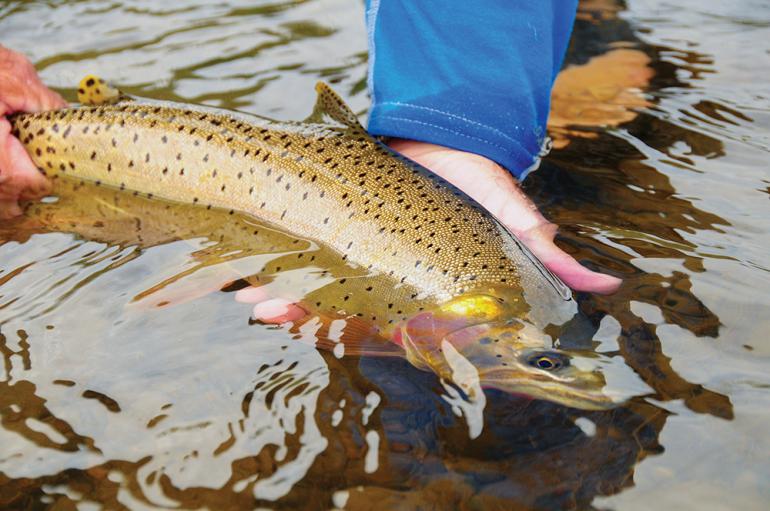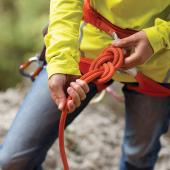Do the Right Thing
Bringing some etiquette to the grip 'n grin.
We all want it: the glory shot with a big grin and an even bigger fish. In a world of selfies, hashtags, and like-garnering, the desire to photograph our catch is strong. For fly-fishing newcomers, a photograph is a fine way to document the experience, and even seasoned anglers can’t resist sharing a pic of a trophy fish.
Wild trout are beautiful creatures and deserve more of the angling spotlight. It’s okay to share them, and the more we feature trout in social media, the more awareness may be generated for their protection. But if you plan to get a photo, be aware of proper fish-fighting and handling techniques for a successful release.
Fight fish quicker.
Be sure the rod has a full bend to it and apply pressure at an angle to the current. Use your thumbnail as a guide: when a fish is hooked, have your thumbnail pointing upstream against the current and not up to the sky. This application of sideways pressure tires a fish more quickly and allows you to pull the fish in the direction you desire.
Get its head above water.
During the fight, the moment you feel the fish begin to rise to the surface, use its upwards momentum to your advantage. It the fish breaches the surface, quickly raise your rod higher to keep its head out of the water. If a trout’s head is poking out of the water, it can’t steer itself and you can net it quickly.
Use a net.
Using a net is easier on the fish, as they’re less liable to flop on the bank and injure themselves or lodge sediment in their gills. A net also allows you to keep the fish in the waterwhile the camera is readied.
Keep the fish wet at all times.
Don’t take the fish out of water until the camera is on, the photographer ready, and the angler gently holding the fish in the water before taking it out of the net. Raise the fish out of the net quickly, snap a shot, and get the fish back in the net (which is still in the water) quickly. If you can see water dripping from the fish in your picture, you know you’ve done it right.
Gently grip and grin. When holding a fish for a photo, place one hand underneath the fish and gently grasp the underside of the body where the tail begins with the other. Do not try to grip the fish from the top or side, as this squeezes the fish’s vitals and prompts it to struggle.
Keep the fish as close to the water as possible.
Pictures always look better when the fish is just above the water anyway. If you’re wading, kneel. If you’re in a boat, do your best to get out or lean over the side so the fish is nearer the water.
Release properly.
Allow the fish time to recover in slower-moving water before release. If a fish shows few signs of breathing and the tail is not moving side to side, move the fish forward and backwards in the current to get water flowing through the gills. The fish will begin to move its tail when it’s ready to swim on its own. Never release a fish in calm, dirty, or very fast water.
Catching fish is fun and taking a good picture is an ideal way to take it home. By practicing proper catch-and-release techniques, you can help reduce fish mortality even while getting a great shot.
Patrick Straub is the author of six books, including Everything You Always Wanted to Know About Fly Fishing. He owns Dry Fly Montana—a small, intimate guide service.
Catch-and-Release: By the Numbers
Fish out of water don’t do well—and here’s the proof.
88%: trout’s chance of survival if exhaustively exercised
62%: trout’s chance of survival if exhaustively exercised and held out of the water for 30 seconds
28%: trout’s chance of survival if exhaustively exercised and held out of the water for 60 seconds
*Numbers taken from a 1992 study of rainbow trout.












